In the course of the previous article I began to talk about the confused and uncertain choices that characterized the beginning of my studies, all in any case very far from the path that only later would lead me to practice the profession which then, for almost forty years now, it got me bread, onion, and even some dessert.
Unlike many, therefore, I came to this profession in a completely casual way, and rather late, but perhaps it was precisely for this reason that this “irresistible drive” that I called “vocation”, in my case was more strong and aware than for many others. I consciously abandoned other possible life paths, perhaps safer and more practicable for me, to launch myself into an unexplored territory, without having a specific technical and artistic preparation, with only a vague idea of what I could do with it in my future.
But I don’t want to spoil it any further: let’s say that my studies, my acquaintances, my projects were far from any reference to what I would really become “when I grew up”, until, as I said above, the spark suddenly flew.
However, it was not that melting pot of ideas and knowledge in which I was immersed during my years in Bologna that produced, at least directly, that sudden “enlightenment”, but a completely fortuitous, divergent and unexpected encounter: pure “causality”. Although, thinking about it, it wasn’t so foreign to the original “culture soup” in which I was moving in those years.
It happened when I started taking courses in “psychology of perception” at the university of my hometown (Trieste), a field of study that I had come across by chance during my academic studies in the History and Psychology of Art, and which had begun to interest and intrigue me a lot. In fact there was something extremely attractive for me in trying to understand the psychological and physiological basic mechanisms involved in the perception not only of works of art, which are conceived precisely with the aim of using those mechanisms in order to convey the message, the information, and the representation of “reality”, but also of the pure vision of the world by human beings: perception – illusion, or sign – meaning.
It was therefore during the course of these studies that I came across a Belgian experimental psychologist (relatively little known to non-experts), named Albert Michotte (1881-1965).
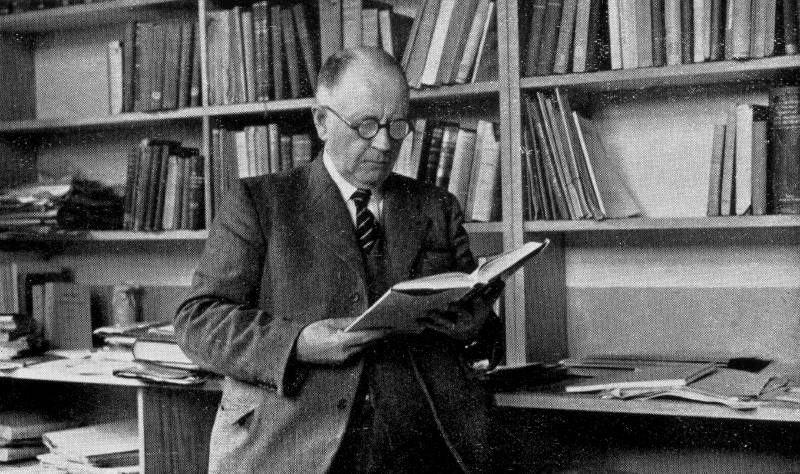
The main focus of Michotte’s research was perception. This was the theme of his first research, and it was to this field, albeit with a new perspective, that almost all of his work after 1940 is devoted. He also had a reputation for creating new and creative techniques and instruments.
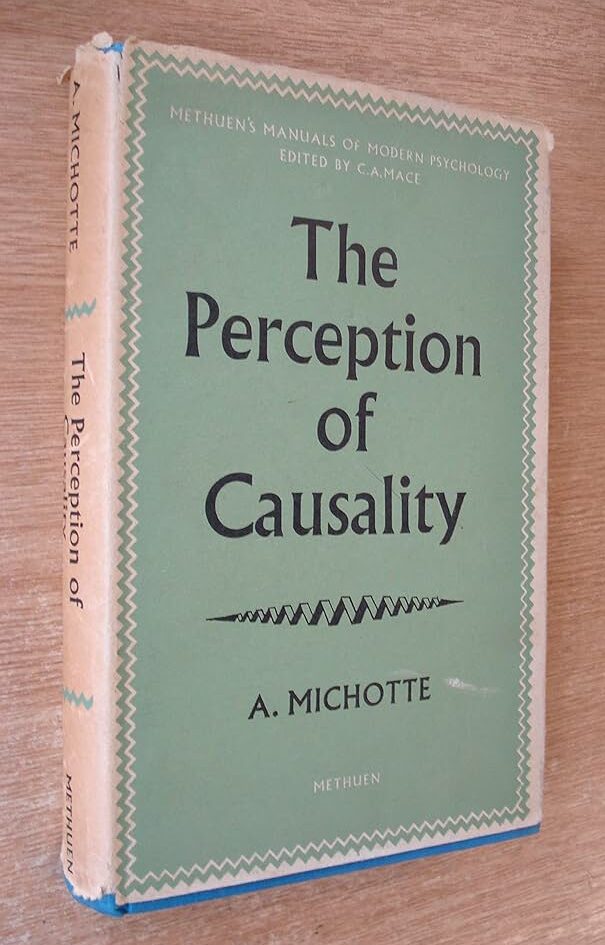
In his 1946 book, “The Perception of Causality”, published originally in French, he became the pioneer work in event perception and met with international acclaim. In this book, he shows how certain very simple visual sequences carry the appearance of causal connectedness. Michotte emphasizes that this appearance is perceptual, not inferred by association: “[T]his is not just a “meaning” attributed to the literal, step-by-step translation of a table of stimuli; they are primitive specific impressions which arise in the perceptual field itself,” [Wiki].
I will deal with this research in more detail in subsequent chapters, since I consider it truly foundational for the subject of our profession. For now I will limit myself to focusing on the primary object of these studies, what struck me to the point of probably determining all my future career.
Michotte posed the problem of probing what were the minimum elements by which our mind perceives the causality of one phenomenon with respect to another: in simple words, what makes us say, for example, that a moving billiard ball that hits another is the “cause” of the movement of the latter. Not only in reality, where there are many elements that interact or interfere with the event, but also in a representation, even a totally abstract one, of the same.
Michotte understands that, once every other spurious element is removed, only two parameters remain in play: movement (and relative speed), and time. That is, the relationship between these elements: back to our billiard balls, a ball [A] moves with a speed [s1], hits ball [B], which after a fraction of time [t] receives energy from ball [A] and moves away from it at a speed [s2].
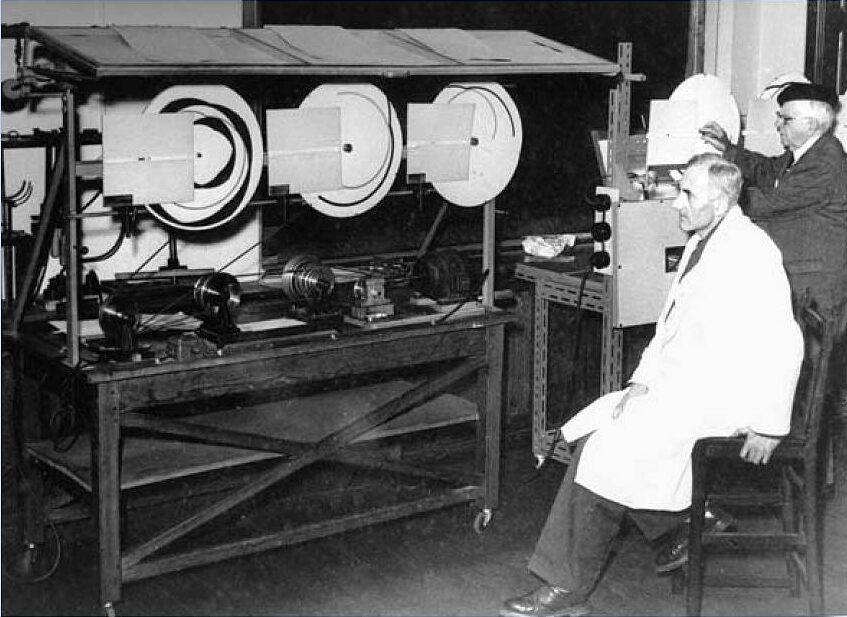
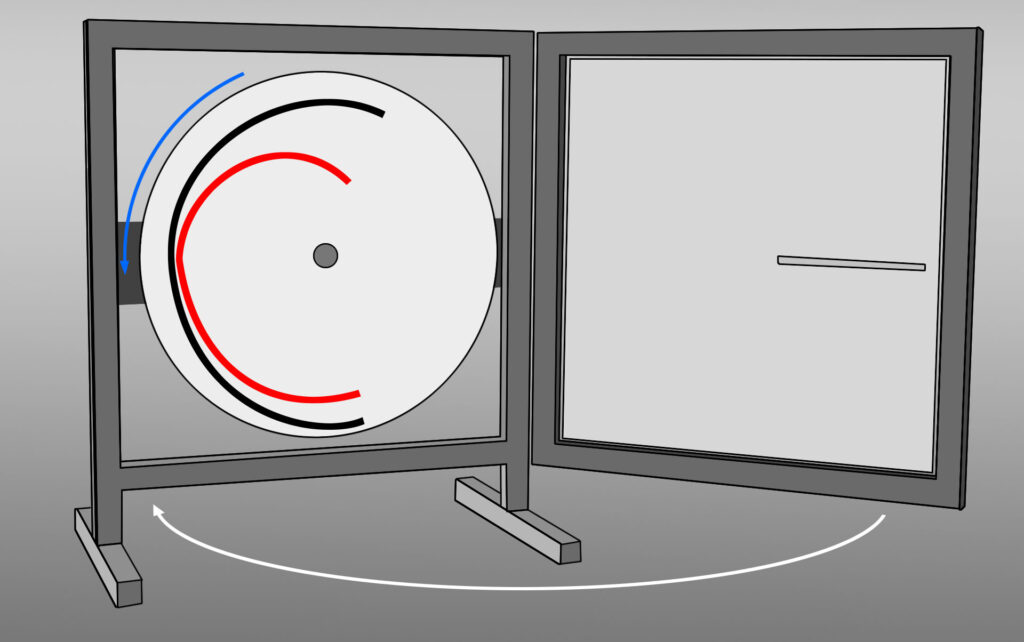
To eliminate any extraneous variable from the experimental field, Michotte devised an ingenious device, consisting of rotating disks with spiral paths showed behind special slots, so as to be able to modify the essential variables involved at will, namely the absolute and relative speeds [s1] and [s2] of the “objects” [A] and [B] (which in his experiments were reduced to black squares on a white background) and the “contact” time t between the two objects. What fascinated me about these experiments was the fact that, by varying these parameters, it was possible to obtain an absolutely binding perceptual effect that could go from a clear and absolutely objective “[A] CAUSES the movement of [B]“, to instead a “the movement of [A] DOES NOT CAUSE the subsequent movement of object [B]“, up to “object [B] actively “ESCAPES” or “RUNS” from object [A]“, with a lot of intermediate nuances all subject to different subjective interpretations.
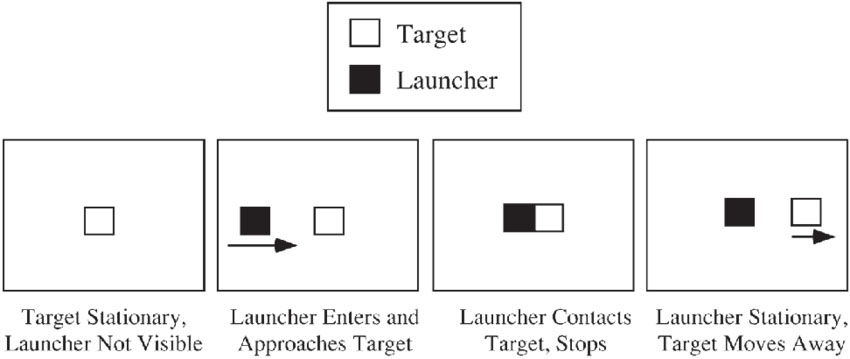
In other words, the simple MOVEMENT of an object could be perceived by our perceptive system as an active, voluntary, or passive action, and the object itself, reduced to a simple “one-dimensional” figure, could be seen as the subject, an agent, an actor, or the object of an action applied to it.
I can anticipate that here, without knowing it yet, I had clearly encountered the raw material, the clay of which the art that I would soon practice was made, because for our perceptive system action corresponds to intention, and intention to a more or less conscious life.
This research involved me to such an extent that I felt the need to delve deeper into it, replicating it, and perhaps adding further elements of my own. Since it was impractical to reconstruct Michotte’s complicated (and expensive) apparatus at home, I thought of using a technique that I knew little about, but which seemed to promise greater flexibility at relatively low costs: animation!
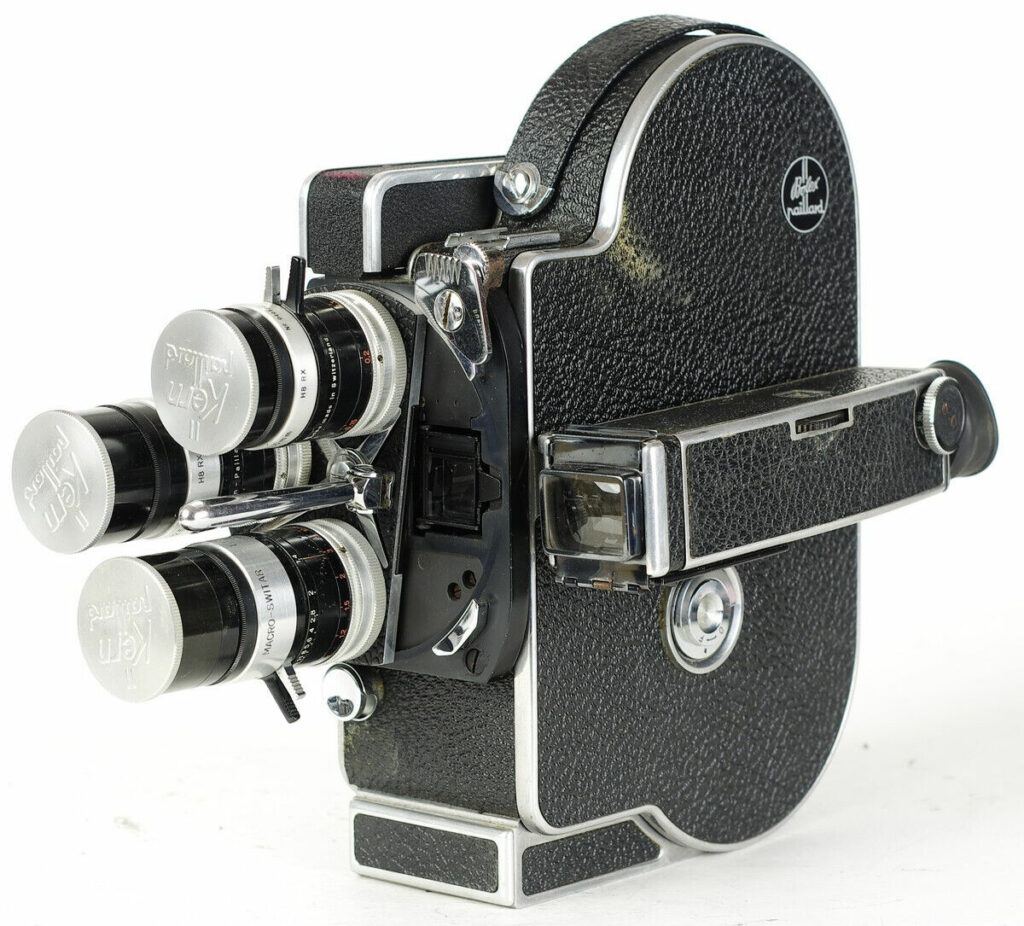
I therefore purchased a second-hand Bolex 16mm, mounted it on a rudimentary stand, and began photographing some white small disks frame by frame, moving them along carefully prepared (invisible) paths on a black cardboard background. I used little disks, instead of the small squares of the original experiments, since they were closer to the concept of “billiard balls” I initially imagined (not thinking that Michotte had decided on small black squares on white background, not only for reasons related to the technique he used, but perhaps also precisely to eliminate any possible residual conceptual approach to a “real” object), but also because in this way I could eliminate the variable of the “contact surfaces”: the point of contact between two disks could be reduced, in fact, to a single point, while in Michotte’s original version the contact occurred on the side of the squares, and therefore perceived as a “surface” in a three-dimensional world.
However, unfortunately I soon realized that the system was not ideal, since, unlike Michotte’s original “spinning discs” device, it did not operate on a perfectly analogue, continuous representation system, but on what today would be called a “sample” – exactly like in CDs audio compared to vinyl microgrooves. In this case, in fact, I had a minimum sampleable interval of 1/24 of a second, equal to the standard speed of the film rolling in the playback system, i.e. the cinema projector or the Moviola. In practice I couldn’t manage time intervals lower than this threshold, so I could not really fully reproduce Michotte’s results, but only approximate them.
Yet all this was not sterile and unproductive work, since even in this way I was able to obtain quite evident perceptive effects and some interesting variations, and I also obtained my little “good impression” in the academic field; but above all it was precisely here that, as I said above, my first encounter with the animation technique took place, and, even more fundamentally, it was here that I “discovered” the power, and the magic, of movement.
It goes without saying that this first rudimentary “stand camera” soon became my first workbench for the creation of my very first real animated films, or rather, animated drawings, but this is a story that would go beyond the scope of these articles.
What matters was my personal “discovery of hot water”, that is, the fact that the movement applied to an object substantially and dramatically changes its nature in our perception of the world: this object, be it a simple white disk on a black background, or a bottle on a table, or a stylized line drawing, or a photographic image, makes a leap in status, acquiring in our eyes a previously non-existent intrinsic property, what we could define as “life”.
This will be precisely the subject of the next article, since we “animators” have included this concept in the very name of our activity: just as a musician is someone who manipulates sounds to obtain an effect of communication, information and emotion, we, as “animators”, do the same thing, manipulating the MOVEMENT.
13 – Movement is Life. And Vice Versa
